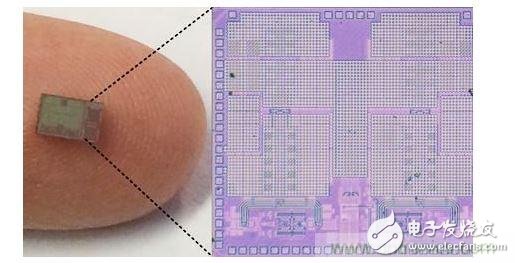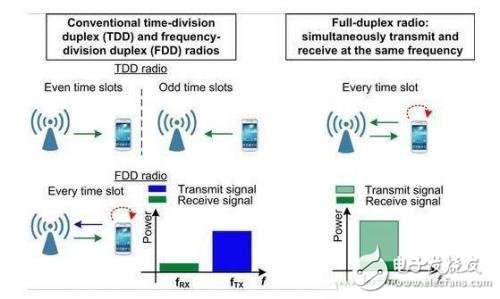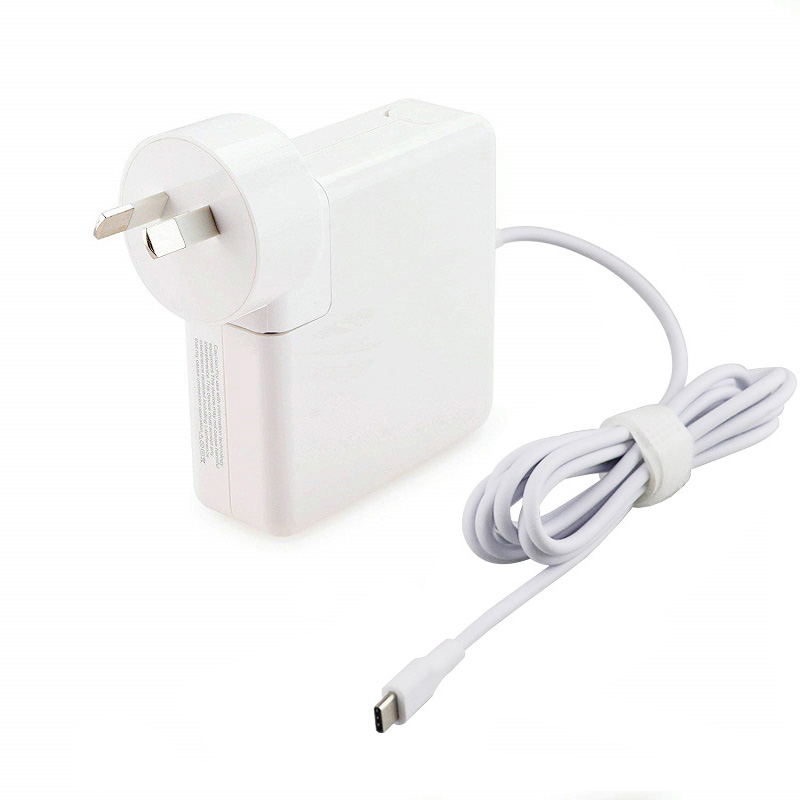In the University's Electronic Engineering department, we have learned that "full duplex" (send and receive) must be done at different frequencies or at different times (technically half-duplex). That is to say, if transmission and reception are not performed simultaneously at different frequencies, it is transmitted and received at the same frequency at different times. However, according to researchers at Columbia University in New York, this one-way "full duplex" is actually deceptive.
Columbia University researchers have recently demonstrated a complementary metal oxide semiconductor (CMOS) chip called the Columbia High Speed ​​and Millimeter Wave IC (CoSMIC) that doubles at the same frequency and doubles at the same frequency. Wireless communication speed.

CoSMIC Lab's full-duplex transceiver ICs are built in nanometer-scale CMOS for simultaneous transmission and reception over the same frequency.
Harish Krishnaswamy, a professor of electrical engineering at Columbia University, said: "Before, it was generally considered impossible to achieve full duplex at the same frequency, because if you transmit and receive simultaneously at the same frequency, the receiver will be due to the transmitter. Interference and failure - the transmitter's interfering signal may be a billion times stronger than the signal it needs to receive. But we have designed a cancellation mechanism for echo or self-interference that can be accurate in parts per billion. Filtering the interference from the transmitter, making the received signal easier to detect after interference cancellation."
According to Krishnaswamy, if there is no such research team to develop such a circuit, "full duplex" is nothing more than trying to hear someone whispering something while someone is yelling at the door. Krishnaswamy is currently working with Columbia University PhD candidate Jin Zhou on the study.
"But if you can somehow eliminate or block the screams next to it, be aware that you have to eliminate the near-perfect, then you can hear these whispers," Krishnaswamy said. "We have found achievable This ideal method allows for the complete transmission of such electromagnetic wireless signals using a tiny CoSMIC chip."

Traditional RF communication (left) and simultaneous bi-directional full-duplex (right) at the same frequency double the speed.
Krishnaswamy's so-called "echo cancellation" or "self-interference cancellation" mechanism - CoSMIC - is installed at the input of the receiver to suppress the loud transmission signal so that a quiet receiver signal can be heard.
"The key innovation of the chip is to eliminate the self-interference of the transmitter with a precision of one-billionth of a cent. It must replicate the transmitter self-interference almost accurately. This is extremely difficult to achieve, especially since the emitter is reflecting objects in the vicinity. , its self-interference or echo will be distorted and changed."
In principle, all RF communications are best suited for this technology, Krishnaswamy pointed out, his research team has designed a circuit that can achieve this goal on a single chip. Researchers will begin to try to double the speed of wireless signals—especially Wi-Fi and cellular communications for smartphones and tablets.
"Wireless communications are facing the need to respond to 5G advances by 1,000X times the data capacity, which will present significant challenges, and the full-duplex industry will play a very important role in achieving this goal," Krishnaswamy said.
In addition to RF, this technology can also be used to double the capacity of an optical communication channel. “We have been thinking about optics, but in the near future, we can expect to master wireless technology more effectively,†Krishnaswamy added.
According to Krishnaswamy and Zhou, the CMOS chips they developed must be manufactured in nanometer scale to achieve a one-billionth elimination rate. In order to implement a commercially available chip package, the research team is working with a team of Gil Zussman, a professor of electronic engineering systems. In addition, DARPA also sponsored the study.

About this project
ADVANCED SAFE CHARGING: The USB-C MacBook Pro Charger Power Adapter combines advanced safety features and premium fire-resistant materials with built-in protection against overheating, overcharging, overcurrent, and overvoltage.Fast Charge with PD 3.0: The USB C charger features a Thunderbolt 3 USB C port for full-speed charging, charging a 16-inch MacBook Pro in just 1 hour and 30 minutes. (Note input: AC 100-240V-1.5A(1.5A), 50-60Hz, output: 20.5V=4.7A, 15V=3A, 9V=3A or 5.2V=2.4A.
Wide Compatibility: Macbook Charger is compatible with Mac Pro 16 15 14 13", Mac Air 13", i-Pad Pro 11"/12.9", and also compatible with other USB-C enabled devices. Such as laptops, cameras, smart watches, mobile phones, tablets, game consoles, headphones, Nintendo Switch, etc.
GREAT ALTERNATIVE USB-C CHARGER: This compact USB C laptop charger is designed with a foldable plug for easy portability and convenient home/office and outdoor charging.
What you get: USB C Charger Add a free 6.6" USB-C to USB-C charging cable, compatible with Macbook Pro, Mac book Air, iPad Pro, it's more sturdy, super durable, tangle-free, with a lifespan of over 10000 Second-rate.
usb c charger for macbook,macbook usb c charger,usb c macbook adapter,usb c macbook power adapter
Shenzhen Waweis Technology Co., Ltd. , https://www.waweis.com
